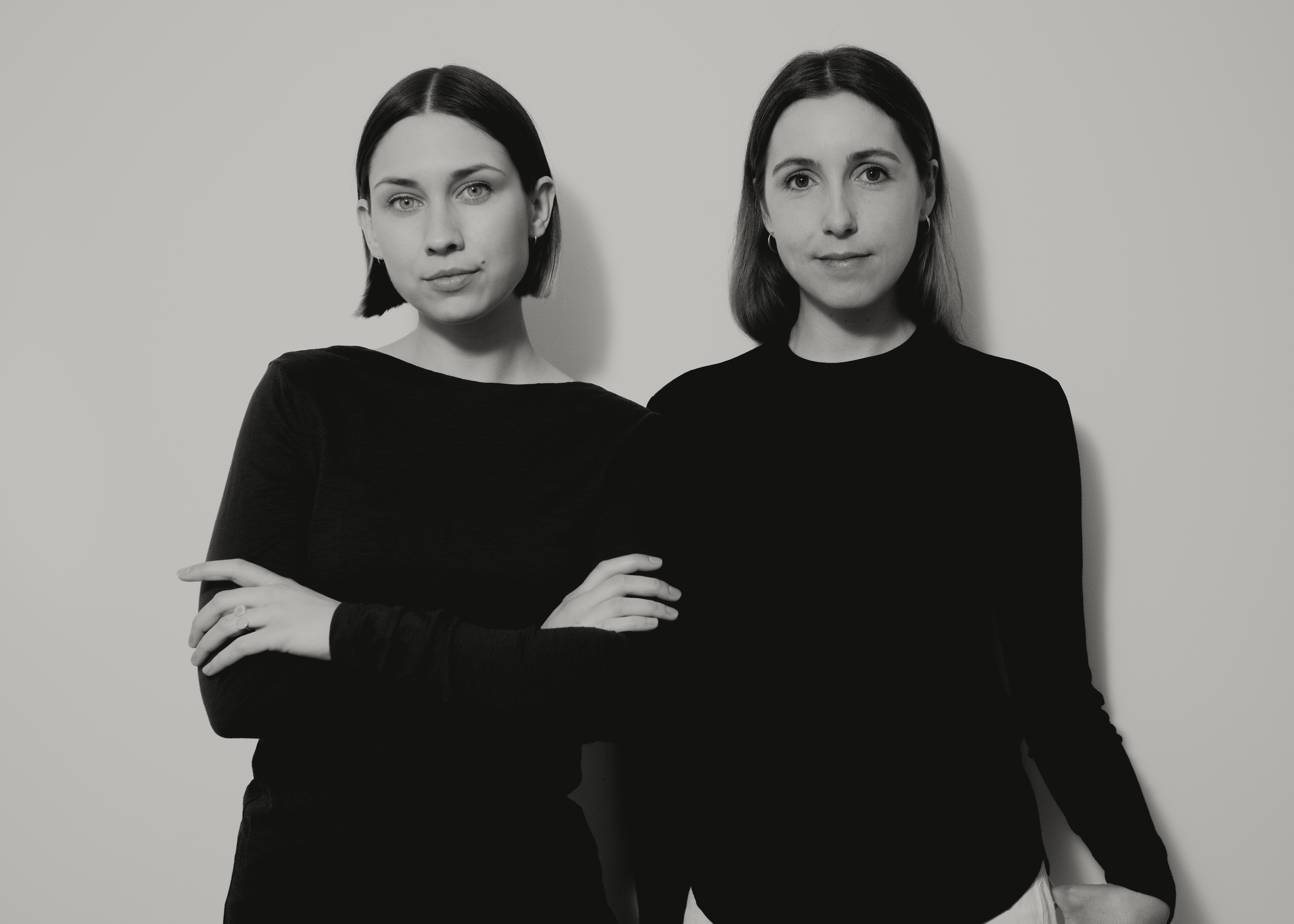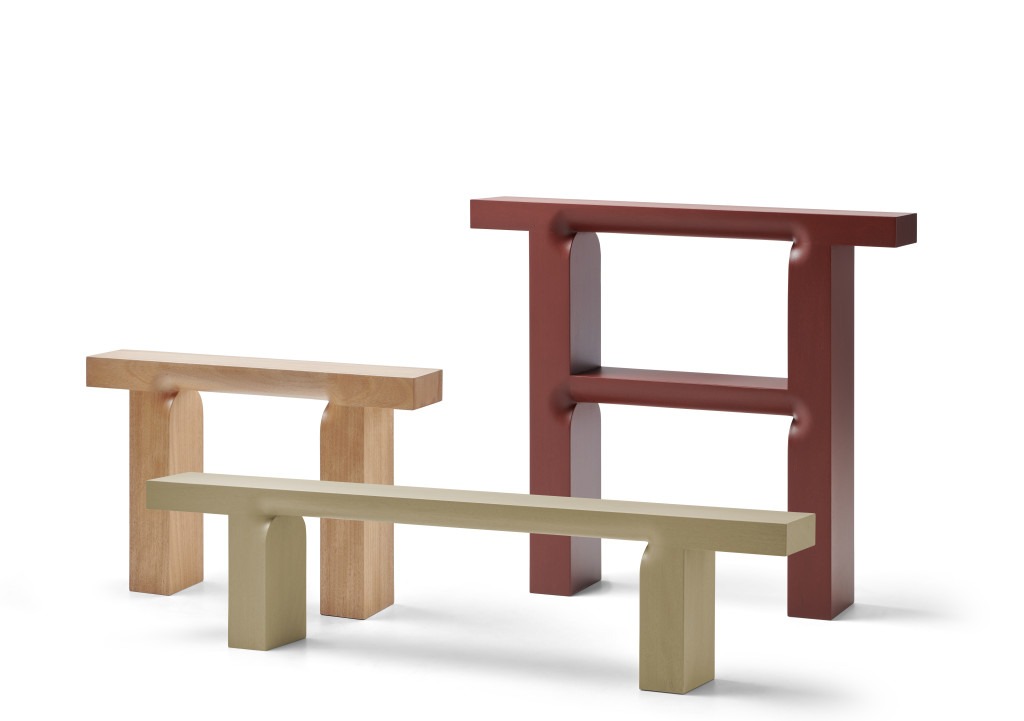Embracing Collaboration over Isolation: Meet Lisa Ertel and Anne-Sophie Oberkrome, the dynamic duo behind Studio Œ. Whether working as part of a collective or as a pair, their approach is deeply rooted in conceptual thinking and meticulous research.
By Jasmin Jouhar

Alone, as a duo, or in a group: Designers Lisa Ertel and Anne-Sophie Oberkrome have worked together in many configurations. From university projects to their shared studio in Berlin, they prioritise collaboration over isolation, mutual learning over individual acclaim. And while they enjoy working as part of a team or collective, as a duo Ertel and Oberkrome are known under the name Studio Œ (pronounced: Ö). It was under this name that they launched their commercial careers, collaborating with Italian furniture manufacturer ‘Mattiazzi’ and Danish brand ‘Our Society’. But as Lisa Ertel points out, their collective achievements – such as last year’s acclaimed ‘Farm’ project – remain just as significant: “As a group you have completely different possibilities. You can get things up and running quickly, but you can’t wait to be asked for help”. Anne-Sophie Oberkrome adds: “It’s a stage you create for yourself.
Working in the Midst of a Collective:
Visitors to the Berlin studio also find themselves amidst a vibrant collective: Ertel and Oberkrome, along with ten other creatives, have transformed a building near the Technikmuseum in Kreuzberg into a full-fledged design studio. The ‘Oben Studio’ sprawls across the building, with meeting rooms, an inviting open kitchen and a basement studio equipped with a photography studio and storage space. They cook lunches together and have the occasional big studio party. Next to the front door is a copy of their ‘Oto’ bedside table for Mattiazzi, launched last year. Other fruits of their collaboration with the Italian manufacturer will be unveiled at the Milan Furniture Fair in April. Lisa Ertel and Anne-Sophie Oberkrome can’t reveal any more at the moment.

From Tree, to Beam, to Furniture
The two 33-year-old designers agree that the ‘Oto’ furniture series perfectly reflects their methodology. “We often start new projects with extensive conceptual research. In the case of the ‘Oto’ furniture series, we meticulously followed the entire transformation path that undergoes a piece of wood, from its origin as a tree to its final form as furniture,” explains Oberkrome. “Our focus for this design was to take advantage of Mattiazzi’s expertise in milling techniques. The result of this process is evident in the finished design: a sturdy, angular object that retains the essence of the original block of wood, only refined by expertly milled curves. “Our aim was to minimise intervention wherever possible,” says Oberkrome. “But are those very interventions that transform a simple beam into a functional piece of furniture,” adds Ertel. Their conversation flows seamlessly, each complementing or adding to the other’s thoughts and arguments. An effortlessly synchronised dialogue is not always a given, especially for designers.



A) Studio Œ, ‘COVE: Polished stainless steel’ for OurSociety, 2023
B) Studio Œ, ‘OTO: Okoumé’ for Mattiazzi, 2023
C) Studio Œ, ‘Neil: One-off (Prototype)’, 2017
Conveying the Tools of Design
Anne-Sophie Oberkrome and Lisa Ertel first met during their studies at Karlsruhe University of Arts and Design in the winter semester of 2011. Although they had been working together on joint projects from the beginning, the founding of ‘Studio Œ’ took place ten years later. “It all developed naturally,” says Oberkrome. “There was no clear decision to join forces,” recalls Ertel. After graduating, they co-founded the design collective ‘Fan’ and established the ‘Bio Design Lab’ at the HfG Karlsruhe, an innovative laboratory for material innovation. Since 2022, Ertel and Oberkrome have been faculty members in the design programme at the Hochschule für bildende Künste in Hamburg under the direction of Konstantin Grcic. Together they mentor students, hold seminars and organise projects, with a focus on teaching the basics of design and design tools. At times, they also find themselves motivating students not to be discouraged by criticism and to continue with their projects.
Finding Balance
The two designers have first-hand experience of overcoming challenges, especially when it comes to maintaining the right balance between the three main aspects of their work: academic teaching and their commercial and collaborative projects. As with many young design studios, business can ebb and flow and income is not always consistent. But Lisa Ertel and Anne-Sophie Oberkrome remain optimistic. “Our goal is to continue to develop the studio and work with interesting companies,” says Oberkrome. Ertel adds: “Actually, we’re quite happy with how things are going so far.
More on ndion
More News on Marke and Produktdesign.
Diese Seite auf Social Media teilen:

